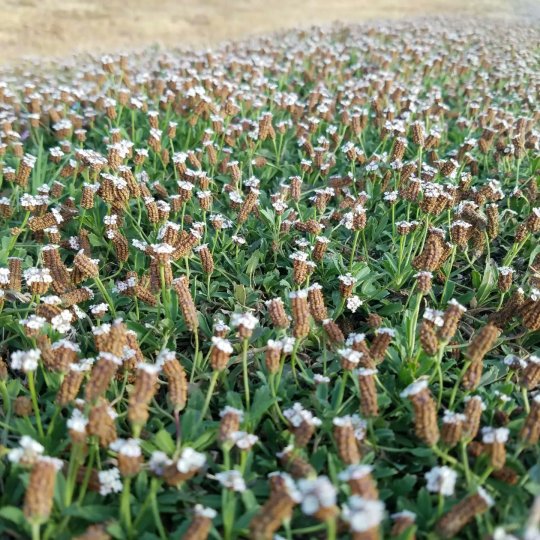#Frogfruit
Text
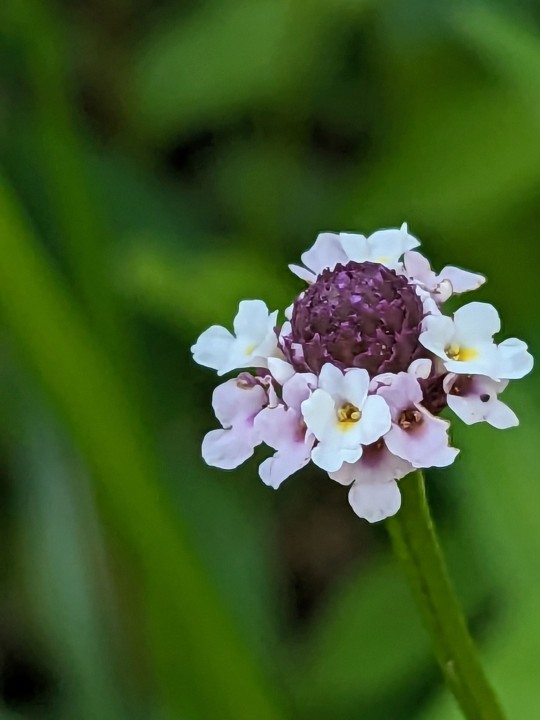
Lanceleaf Frogfruit
Phyla lanceolata

This perennial species in the verbena family is native to much of the United States and Mexico. It's usually found growing in disturbed wetlands, ditches, or yards and provides nectar for many beneficial insects when it blooms during summer.
The plant pictured was in disturbed bottomland woods near Butler Lake and the Meramec River in southern St. Louis County, Missouri, USA
June 20th, 2023
Olivia R. Myers
@oliviarosaline
#botany#Phyla lanceolata#phyla#Frogfruit#lanceleaf frogfruit#verbena#Verbenaceae#vervain#Lantaneae#nature#woods#naturecore#fairycore#the ozarks#ozarks#missouri#plants#flowers#tiny flowers#wetlands#Missouri nature#forest floor#exploring the woods#flower photography#nature photography#plant photography#nature appreciation#ecology#lantana#flowercore
29 notes
·
View notes
Text



0 notes
Photo
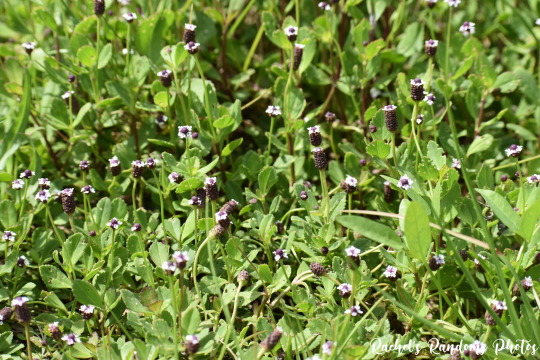
Frogfruit (Phyla)
Taken at South Patrick Community Park in Satellite Beach, FL
#frogfruit flower#frogfruit#flower#flowers#florida#florida photography#photography#nature photography#nikond3500#native flowers#wild flowers
1 note
·
View note
Text
Ani Reviews: A Step-by-Step Guide to a Florida Native Yard
I promised you guys a review and here it is. I've never really done a book review before but I'm doing my best to make this Coherent and Helpful.

[Photo ID: a book, titled A Step-by-Step Guide to a Florida Native Yard by Ginny Stibolt and Marjorie Shropshire.]
Out of all the books I checked out from the library this round, I started with this one because it was the shortest out of all of them--if we don't count the appendix and index, its 101 pages long. You can read where I sort of live blogged a portion of this read here.
I think its a pretty good read! It's definitely a lot more relevant if you are the home owner and most directly in charge of landscaping decisions and such. It gives a bit of advice on how to handle making similar changes in an HOA neighborhood, and provides pointers and resources to other books that can also be helpful in the journey to make your landscape a wildlife-friendly habitat. It focuses on Florida specifically, as denoted by the title, and will frequently remind the reader that gardening in Florida is vastly different from gardening anywhere else. So whether you've been a Florida resident all your life, or are planning on making a move on down here, this book can be a helpful resource if you want to transform some or even all of your yard into a habitat.
After the introduction, the book is separated into seven major sections referred to as Steps. There's Assess Your Property, Plan for Drainage and Stormwater Sequestration, Install Trees, Plant Shrubs, Working with Herbaceous Plants, Build a Wild or Natural Area, and Create Spaces for Human Use. If you're more interested in one part than the others, you can definitely skip around to find what you're looking for. I will say, the Drainage and Stormwater section made my head spin a bit.
I will say this: I don't know if the writers ever fully decided if they wanted this book to be targeted towards those who are already gung-ho about native plants and itching to transform their landscape, or to people who are just beginning to dip their toe into the idea. Overall though, it was a nice and informative read, and the illustrations inside are lovely.
#ani reviews#ani rambles#out of queue#honestly like this book was a nice source of inspo that would inspire a transformed yard FOR ME#however if someone isn't already interested in native gardening I don't think its gonna push them into it#if all the talk about complicated drainage systems doesn't scare them off then honestly like#the alternative solutions they offer for lawns aren't... detailed on much#i would really love to find a book that focused on alternative lawn groundcovers for Florida specifically that targeted the concerns#i find that most people have#like 'can this hold up to kids playing soccer? to dog activities? if I roll my trashcan over it to get it to the curb is it gonna die on me#because like this book recommends dune sunflower as an altenrative to turf grass but even in the appendix section it doesn't mention if it#can handle being stepped on at all#it does say frogfruit is a good turf grass substitute but also like#frogfruit sunshine mimosa and twinflower are the other 3 it suggests forth and theyre ALL butterfly hostplants#and while the possibility of there being bugs in a turf lawn is far from an impossibility idk the idea of stepping on caterpillars icks me#*out. like even if ur not barefoot#and i know my mom and one of my other friends' first concerns would be 'would snakes hide in it' and idk if thats like#a Fringe Concern that most people don't worry about but I've never seen anyone address it when talking about alternative lawns#i am getting off topic#im ending the tags here byebye
6 notes
·
View notes
Text
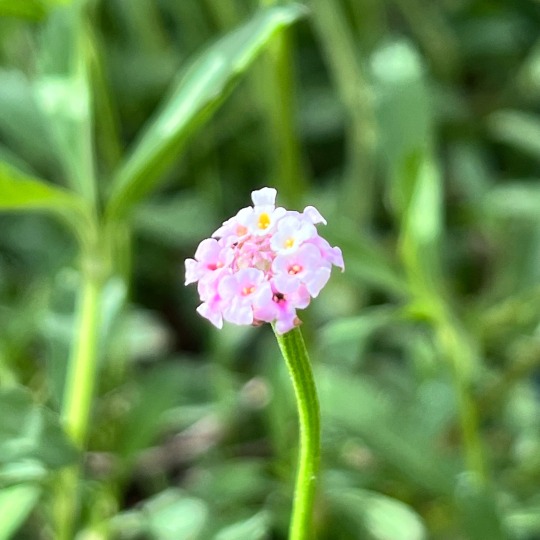

frogfruit and lanceleaf coreopsis 🥰
#frogfruit is on the way to covering the entire bed#and both coreopsis plants became huge without me noticing#only one is flowering tho which is strange since they're right next to each other#my post#native gardening#Phyla nodiflora#Coreopsis lanceolata
1 note
·
View note
Video
n155_w1150 by Biodiversity Heritage Library
Via Flickr:
Flora Graeca, sive, Plantarum rariorum historia, quas in provinciis aut insulis Graeciae / Londini :Typis Richardi Taylor et socii, in Vico Shoe-Lane :MDCCCVI-MDCCCXL [1806-1840]. biodiversitylibrary.org/page/54122759
#Greece#Identification#Mediterranean Region#Pictorial works#Plants#Lloyd Library and Museum#bhl:page=54122759#dc:identifier=https://biodiversitylibrary.org/page/54122759#flickr#botanical illustration#scientific illustration#verbena nodiflora#Phyla nodiflora#Turkey tangle frogfruit#matchweed
0 notes
Text
what gets me, is a lot of urban and suburban areas could be awesome unique plant habitats, because there are so many ferns and mosses and liverworts and flowers made to grow in very specific conditions that are unusual in the wild but can easily be formed by buildings and other architecture
For example outside of a building on campus there is a pipe that drips water from the side of the building and a small drainage basin full of stones, and near the drip from the pipe there grows a Virginia Dayflower, which likes to grow only in the stony areas of a creekbed that the water rises to cover rarely, or in gullies on a mountain side where rain rushes down sometimes
In many places bricks or stonework accidentally creates the perfect conditions for a type of moss which somehow ends up there, and people are like "Wow, what a lovely moss covered wall..."
I feel that with deeper knowledge of the plants, we could create buildings much greener and lusher and full of life, and even the urban areas would flourish with plants more specifically adapted to a place very similar to the artificially created place
In many cases they aren't already flourishing simply because the seeds have a hard time finding their way from the wild places into the city or town...especially since so many cities are surrounded with the dreaded SUBURB! Which can be worse...
For example drainage ditches in my home could be full of Lanceleaf Frogfruit and Soft Rushes and Woolgrass and Sedges of many kinds
But because no one knows the ways of the plants they are full of a regular lawn grass
2K notes
·
View notes
Text
Frogfruit Ground Cover: Growth and Care Guide
Frogfruit Ground Cover: Growth and Care Guide
Ground covers are a landscaping term that describes low-lying plants covering sections of the ground with little maintenance. These plants have aesthetic purposes but can also have some functionality.
Frogfruit is a type of ground cover that serves a purpose with blossoming flowers to bring out its beauty. Not only will it make your yard pretty, but frogfruit can also cover dirt patches and areas…

View On WordPress
0 notes
Text

Scientific Name: Phyciodes phaon
Common Name(s): Phaon crescent
Family: Nymphalidae (brush-footed butterfly)
Life Stage(s): Adult
Location: Plano, Texas
Season(s): Summer
Not to be confused with pearl crescent.
The easiest way to tell the difference is the cream-colored band in the middle part of the forewing, which is found on phaon crescents but not pearl crescents. In general, phaons are also a bit smaller, with wingspans between 1″ and 1½″ (25–38 mm), while pearls range from 1¼″ to 1¾″ (32–45 mm).
The Alabama Butterfly Atlas notes that frogfruits are host and nectar plants for phaon crescents, and pearl crescents prefer asters. I would imagine that these butterflies visit more plants than just their preferred species, but it happens that (though it’s probably hard to tell here) this one is indeed perched on a frogfruit flower head. Similarly, the pearl crescent from my earlier post was resting on an aster plant.
#Phyciodes phaon#phaon crescent#Nymphalidae#Plano#Texas#summer#orange#butterfly#Lepidoptera#insect#bugblr
17 notes
·
View notes
Text
I return with more clangen

More info on the characters below the cut ^-^
Breezehorse (Ginger with the collar)-
She/her
As you can guess, she's a kittypet that joined the clan. She hasn't done too much of overall importance other than either convince cats to join or antagonize other clans. She doesn't really seem to understand her actions have consequences, much less for her entire clan. She also a mate that is also pretty chaotic but a bit more serious than her.
Frogfruit (Dilute ginger with bow)
She/Her
Frogfruit hasn't really done anything. The only thing of note for her is she joined on the same moon as another warrior got the suffix fruit so I like to imagine Pebblestar panicked and just blurted out the suffix.
Yarrowspeckle (White cat with ginger splotches)
She/Her
She's honestly the whole reason I drew this. She just joined so there's not much I can say about her.
Fuzzyflick (White with gray back and spots. Blue eyes)
He/Him
Fuzzyflick is the mate of Stemmouse (cat I drew in a previous post) and while looking through my notes I've started to notice the amount of stuff this man has seen. He's been almost killed and been on multiple patrols where they've encountered injured loners or kittypets and attempted to carry them back to camp only to have them die on the way. He's generally pretty serious but can let loose and be more soft around cats he likes.
Tricklestep (White cat with grey spots. Amber eyes)
She/Her
Tricklestep has so much anxiety and I feel so bad for her. It seems most of the time she's worried about something or another. Most cats think she just needs to chill out but she finds that easier said then done. She also gets sick a lot and most of the first year she had something at all times.
Girly Pop (brown cat with rosettes)
She/Her
Yep she is actually named that. She also seems to have a lot of visions. That's about all, she's just kind of chilling and being an average warrior.
3 notes
·
View notes
Text
@thebackestofburners Re: my rewilding project, I belong to the Florida Native Plant Society, which advocates for replacing invasives with native and wildlife-friendly plants. They replace missing species in parks and so on. My personal, near-and-dear plan involves my back yard, so about an acre in central Florida. Like much of the state, it was pretty overtaken with invasive species when my family moved here in 2014: Tuberous sword ferns, red fire ants, camphor trees, philodendrons, sapodillas, etc. (I really wish people would learn that, just because something will grow in Florida, doesn't mean you should give it the chance.)
Even more alarming were the quantities of pesticides, herbicides, and fertilizers that people dumped on their yard. That's a problem I started working on pretty quickly, doing spot treatments on fire ant nests and letting the other insects be. (Don't use acephate as fire ant killer! Plants take it up.) The situation very slowly improved: After about five years, I saw our first caterpillar, and I saw a few more bugs every year after.
The rest, I started working on a little a year ago, after my beloved dog, Piglet, died. She was so precious, and I wanted to give her remains back to the world in a way that made sense, so I found a native tree (pignut hickory), planted it over her grave, and started growing the rest of everything around that. I also got a few other native plants at the same nursery; I'd been intrigued by the "forest gardening" agricultural system found in some places, and thought that it might be a good way to replace the barren lawns and water-hogging ornamentals that take up so much space in Florida. And it seemed like something that would honor my wonderful pet.
I made myself a promise, right after Piglet died, that I'd live the rest of my life in a way that made the world more like one she'd deserved. I'm think I would've given up, if I hadn't been focused on that.
The soil was almost dead when I started. People don't realize it, but lots of plants are allelopathic, meaning that they secrete toxins to keep other plants from growing. (In their home environments, the other plants have evolved some defenses, and there's a balance. It's only a bad thing when you put the plants somewhere they don't belong.) Then there are plants kill, or just don't sustain, the local microbial communities that local plants are used to. Other times, people do grow native plants, but they plant them in a monoculture that can't function without constant fertilizing and watering, because ecosystems need more than one thing to work.
Anyway, I've been removing as many invasives, diversifying the grasses, and replacing microbes (I use BioOrganic's Mycorrhizal Inoculant Plus; it costs a lot, but a little goes a long way) as much as I can. I don't have use an irrigation system (not even soaker hoses, which, as far as I can tell, are always made of toxic rubber), and, outside of the useful-plants area where I built beds to absorb any excess, I only apply fertilizer after pulling out a nutrient-greedy invasive.
So I identify plants and find replacements that work with the soil type (acidic, alkalkine, rich, poor) and water table in my area. During the worst of the drought this spring, I was working 4-6 hours outside, 7 days a week. Currently, it's more like 2-3 hours.
And it's working! We have firebushes, beautyberries, Florida betony, creeping mint, frogfruit, a sassafrass, a sparkleberry, a coralbean, a flatwoods plum, purple lovegrass, coonties, hairypod cowpeas, blue sage, scarlet sage, and more. (The firebushes and beautyberries predated my project; I had simply insisted on those particular natives when we moved in.) One day this summer, I saw 3 kinds of bee in the yard! It used to be rare to see any bee, of any kind, here. I've seen 4 different kinds of butterfly on the same day. There are so many different textures and faint scents and colors where before there were only a handful. It's exhilarating, and it makes me feel like I'm doing right by Piglet.
Now, I know that not everyone has the option of turning an acre or more of land into rewilded territory. But there are some things that most people can learn and implement to make future reclamation less daunting.
When you see a plant you find appealing, check a resource like Plants for a Future (PFAF) or the USDA's PLANTS Database to see if it's native to your area. If it isn't, you should do further research to make sure it isn't harmful before you plant it.
PFAF is also a great resource if you're out of inspiration and want to browse the possibilities. You can search by habitat type or plant family.
Be very careful about following "trends" in gardening. For example, people copying "influencers'" succulents collections leads to overcollection in the wild.
Chlorine and chloramine kill good germs. I started out leaving big boxes of water to sit for 48 hours while the chlorine evaporated, but I've since moved on to hose-end filters, and they seem effective. However, if your utilities add chloramine rather than chlorine, evaporation won't work, and you'll need to look closely at the specs on your filters.
Try to dig up (preferably with a handheld tool, not a tiller or plough that causes deeper soil damage) at least some patches of lawn grass and replace them with different groundcover for diversity, and make sure that you let at least some of your grass go to seed for birds to eat.
Co-ops and extension services sometimes offer discounts on native seeds. But make sure that you understand the seeds' requirements: Many germinate better after scarification and/or cold stratification under specific circumstances.
If you can't afford native plants for your land just yet, try running a search for "wildlife-friendly" plants that you can grow in your area. This means plants that, although they originate somewhere else, aren't toxic to local plants and animals, and may provide food or shelter to them. For example, I have a form of wild coffee plant that likely originated in Africa, but thats berries can be eaten by birds.
Currently, I'm working on spreading cuttings throughout the yard, keeping them watered, and planting my late-summer vegetables. But I don't think that a caring lifestyle ends at the door. One of my big goals is be to retrofit our house with a composting toilet and start growing my own "toilet paper" leaves, thereby sparing our local aquifer, feeding my dirt, and keeping PFAS-contaminated toilet paper out of the ocean.
2 notes
·
View notes
Text
Discovered something fun today.
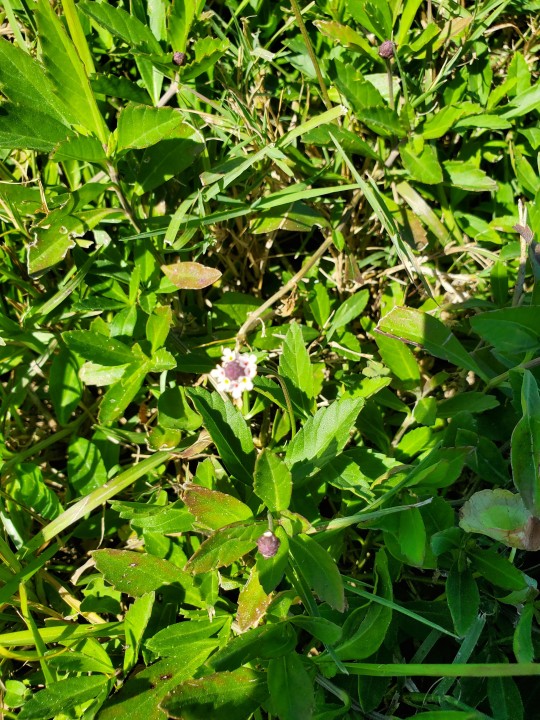
THIS

Is called FROGFRUIT.
1 note
·
View note
Text
new (to me) plant discovered today: Turkey Tangle Frogfruit (Phyla nodiflora)
1 note
·
View note
Text
im so bad at growing seeds :( if i run out of Herissantia crispa seeds theres no going back theyre gone
ill repot the frogfruits and keep nurturing the soil in case the seeds are just taking their time in there
1 note
·
View note
